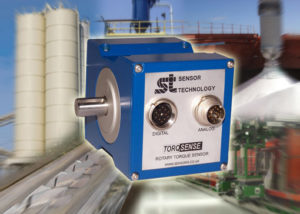
 Dry bulk handling is en route to becoming a precision science with a level of control previously undreamt of, thanks to 20 years of research and development into digital non-contact torque monitoring.
Dry bulk handling is en route to becoming a precision science with a level of control previously undreamt of, thanks to 20 years of research and development into digital non-contact torque monitoring.
Dry bulk handling is following many other industrial processes that have been redeveloped from a ‘black art’ to a highly accurate and controlled procedure.
A generation ago much of industry was in the hands of time-served artisans who relied on their many years experience to tweak and tease operations to ensure a good result. Usually they were unable to explain why they made the decisions they did, but the results generally turned out OK!
While the idea of horny handed sons of toil is all very romantic, it is hardly the stuff of modern industry where precision has to be the watchword – where margins and timetables are so tight that every thing must be controlled to within very demanding tolerances.
Computers have of course been crucial to this advancement, and it is developing the ability for them to ‘see’ what is actually going on and constantly retune the process that is the heart of the matter.
“Technically we call this real time data collection,” says Tony Ingham of Sensor Technology Ltd, one of the companies at the forefront of current developments. “It’s the eyes and ears of the computerised system that constantly monitor what is going on. With that information flowing, the computer can then do its bit.”
Real time data is collected by having sensors monitoring the critical variables of an industrial process. This is fed straight to a computer which can perform a number of tasks related to the process. For instance, it can optimise one variable against another, convert raw data to useful information, or summate data for complex analysis.
However, some critical data can be hard to collect, and that is where Senor Technology’s research into torque monitoring comes in. Nearly all machines are driven by a motor through a rotating shaft, and monitoring the torque, speed and power in this can provide masses of useful information.
“Consider a screw conveyor or auger,” explains Tony. “If this is rotating empty, it requires little power from its drive shaft. If it is half full, it requires rather more, and if it is completely full its needs a lot more.”
“The same goes for speed – the faster, the more power consumed.”
“And the denser the material being conveyed, the more power required.”
“So by constantly measuring the torque in the driveshaft, we can determine the volume and weight of material conveyed.”
This is vitally important for say filling a ship’s hold, and if this information is combined with more real time data, the process becomes highly controllable.
But measuring torque is far harder than you may first imagine. Because the shaft is rotating wires attached to it would wind up and snap, so a special way of monitoring it is required. The traditional solution is to use slip rings, but these are expensive, difficult to set up and far too delicate in use for most industrial applications.
Sensor Technology stumbled on a solution to this problem some years ago when working on a project for the automotive industry and has been steadily transferring the technology to other industries ever since. Tony gives the basic principles:
“Our technology, called TorqSense, effectively senses and measures the sound waves generated by a rotating shaft and converts them to a torque measurement. Additionally, we don’t need physical contact with the SAW, just a radio frequency, RF, pickup close by.”
TorqSense torque sensors actually use two tiny Surface Acoustic Wave devices or SAW’s made of ceramic piezoelectric material containing frequency resonating combs. These are glued onto the drive shaft at 90degrees to one another. As the torque increases the combs expand or contract proportionally to the torque being applied. In effect the combs act similarly to strain gauges but measure changes in resonant frequency.
The adjacent RF pickup emits radio waves towards the SAW’s, which are then reflected back. The change in frequency of the reflected waves identifies the current torque.
This arrangement means there is no need to supply power to the SAW’s, so the sensor is non-contact and wireless.
“TorqSense measurement together with the digital outputs it offers is often the only practical way to measure torque and integrate it into an industrial environment. And once you are collecting torque data this way, you are well on the way to sophisticated real-time control of complex process.”
TorqSense is already in use in many liquid handling applications, in mixers, in the nuclear industry, for testing aerospace components, running drug trials. It is applicable to all sizes, from dispensing active pharmaceutical ingredients, through stirring industrial quantities of cook-chilled curries, to modelling storm and flood water flows.
“Dry bulk handling is traditionally thought to be harder to monitor,” says Tony. “But using TorqSense puts it on exactly the same footing as many well established processes.”







